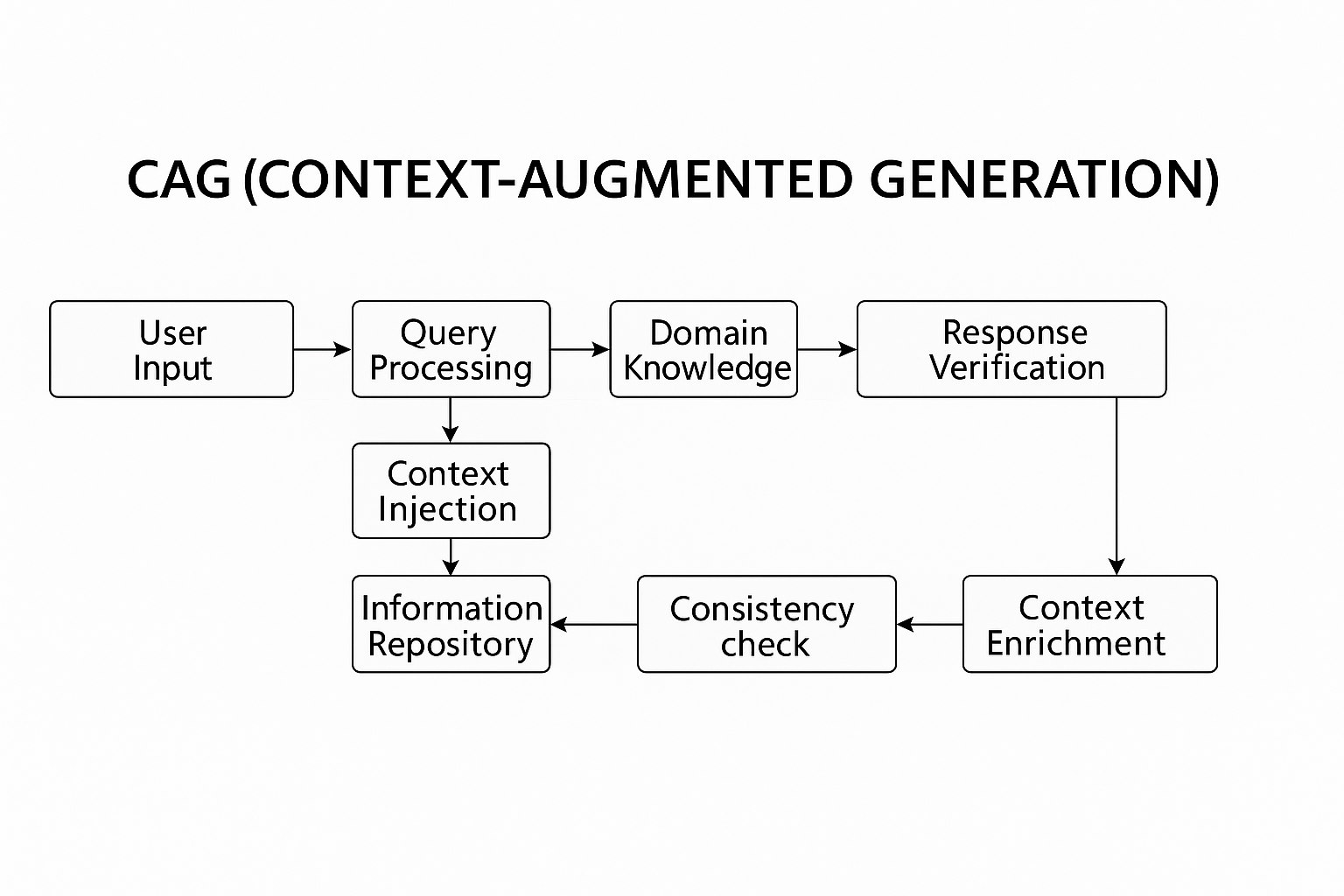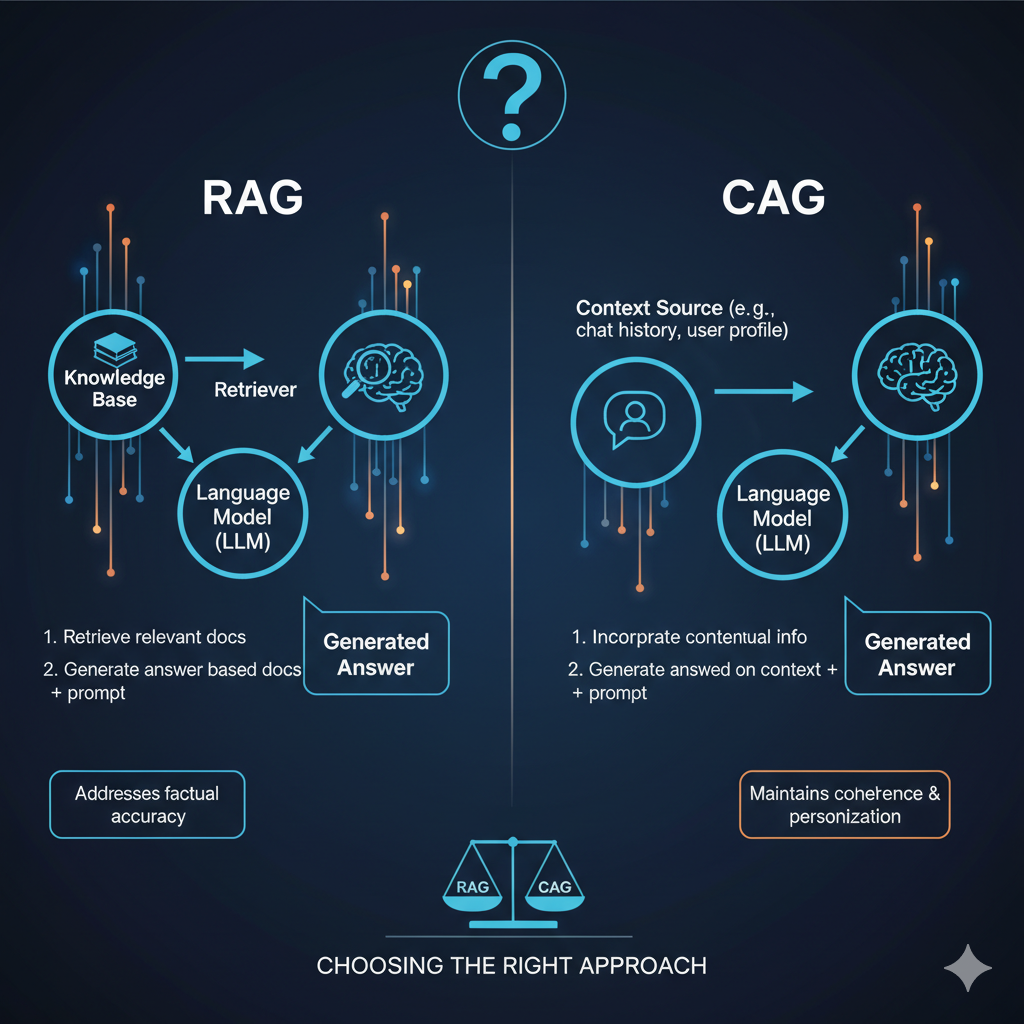Generative AI has entered its next phase — one where context isn’t just retrieved but understood, structured, and evolved. The debate today is no longer just about Retrieval-Augmented Generation (RAG) but about its emerging successor — Context-Augmented Generation (CAG)
Retrieval-Augmented Generation (RAG) enhances LLMs by connecting them with an external knowledge base. When a user asks a question, RAG retrieves relevant documents and passes them as context to the model before generating a response.
It solves one major limitation of traditional LLMs — hallucination — by grounding answers in factual, up-to-date data.
- You ask: “What’s Microsoft’s latest AI initiative?”
- The system searches enterprise knowledge base, retrieves recent announcements, and the LLM generates a factually grounded answer.
Strengths of RAG:
- Dynamic, updatable knowledge (no need to retrain models)
- Transparent grounding and traceability
- Domain-specific adaptability
Limitations of RAG:
- Retrieval quality defines answer quality
- Context window limits and redundancy
- Lacks reasoning over multiple sources — it retrieves, but doesn’t synthesize deeply

Context-Augmented Generation
Context-Augmented Generation (CAG) is the natural evolution of RAG. Instead of merely retrieving, CAG understands, structures, and prioritizes contextual information dynamically across different layers — memory, history, user intent, and environment.
Think of CAG as RAG + reasoning memory + context hierarchy.
How CAG Works:
- Retrieves information (like RAG)
- Understands the intent and conversation state
- Builds a hierarchical context — combining long-term memory, session history, and dynamic facts
- Generates adaptive, personalized, and goal-oriented responses

Key Differences: RAG vs CAG
| Aspect | RAG | CAG |
|---|---|---|
| Core Mechanism | Retrieves and injects documents | Builds multi-layered contextual understanding |
| Data Scope | Static or document-based knowledge | Dynamic, multi-source, conversational memory |
| Output Quality | Factually accurate | Factually accurate + contextually relevant |
| Adaptability | Limited to retrieved data | Learns and adapts over sessions |
| Use Case | Search-augmented Q&A, knowledge bots | Personalized AI assistants, enterprise copilots |
Why CAG Matters for Enterprises
As organizations integrate GenAI across CRM, HR, finance, and operations, static retrieval isn’t enough. Business context evolves in real-time. CAG allows AI systems to:
- Remember user preferences and organizational policies
- Adapt to ongoing workflows
- Maintain continuity across conversations
- Provide insights, not just answers
Imagine an enterprise copilot that doesn’t just “fetch” data from Salesforce or SAP — it understands your current task, recalls prior actions, and recommends the next step. That’s the promise of CAG.
RAG made AI grounded.
CAG makes AI contextually intelligent.
